В.Шавров История конструкций самолетов в СССР до 1938 г.
"Соммёр" ("Зоммер"). Это один из первых самолетов выпущенных в 1910 г. одновременно с "Фарманом-IV". Автор самолета французский конструктор и летчик Роже Соммёр - ученик Анри Фармана. Образец этого самолета был приобретен русским военным ведомством, а Русско-Балтийский вагонный завод в Риге начал освоение авиационных конструкций с постройки семи его экземпляров.
Первые шаги сопровождались немалой рекламой, но после гибели па этом самолете русского авиатора В Смита 14 мая 1911 г. дальнейший выпуск его был прекращен.
Во Франции на этом самолете 24 марта 1911 г. был также совершен рекламный полет с 11 пассажирами-мальчиками.
Самолет||
Год выпуска||1910
Двигатель, марка||
Мощность||50
Длина самолета, м||12
Размах крыла, м||10,2
Площадь крыла, м2||41
Масса пустого, кг||350
Масса топлива+ масла, кг||70
Масса полной нагрузки, кг||250
Полетная масса, кг||600
Удельная нагрузка на крыло, кг/м2||14,6
Удельная нагрузка на мощность, кг/лс||12
Весовая отдача, %||~40
Скорость максимальная у земли, км/ч||65
L.Opdyke French Aeroplanes Before the Great War (Schiffer)
Deleted by request of (c)Schiffer Publishing
The 1910 Biplane: Powered with a 50 hp Gnome, the aircraft featured rounded ailerons extending well behind the trailing edge - the shape was modified at least once - and a monoplane forward elevator with 2 long flat curved skids at the tips, attached to the landing gear. But the most remarkable feature was the variable incidence tailplane. The control wheel for this device was set horizontally at the pilot's left, and was characteristic of all Sommer designs till 1911; the arrangement was used to control stability and the speed of the aircraft. For instance: the center of gravity on these aircraft changed when the wings were wet. A large rudder appeared initially ahead of this tailplane, but was soon replaced with 2 pairs of small closely-spaced surfaces both above and below. The pilot sat on the leading edge of the lower wing with the stick at his right, controlling only the front elevator; aileron control cables were first attached to the pilot's jacket, then to the top of the stick, when it was located between the pilot's legs. The fuselage and elevator could be unhooked to fold back against the wings.
Many Sommers of this type were exported, particularly to Great Britain (represented in 1910 by Charles Rolls), Belgium, and the Netherlands. One was sold to Russia and copied; another to Germany, in 1910; the Albatros firm applied for license to build these machines. Many variants appeared, with slight improvements to structure and airfoil.
(Span: 10.36 m; length: 12.5 m; total area: 36 sqm; empty weight: 330 kg; wing incidence: 9°; 50 hp Gnome, Vivinus, Aster, ENV, among others)
As soon as he could, Sommer began to fly with from one to 3 passengers on what were then fairly long flights. The machine was slow, and heavy on the controls. In May he flattened the airfoil and reduced the number of vertical surfaces from 4 to 2; the stick was placed between the pilot's legs.
In June 1910 he produced a new variant, a 2-seater with Farman-type front elevator mounting, different rear skids, 2 rudders, and simplified undercarriage. The airfoils were changed again, the results being known as "a flat wing." 2 or 3 were sold to the Army, but they were all heavy on the controls and too fragile; one of them was never correctly rigged. The Army preferred the Farmans, to which they had grown accustomed through the Farman school.
In July or August, Sommer sent to the Reims meeting a new racer, similar to the original biplane but with a reduced lower span; and a larger machine with 2 more ailerons on the top wing, which increased the span to about 12 m. From this design came the later Aerobus.
At about the same time Sommer tested a twin-engined machine which flew at least once, on 27 September 1910. No record exists, not even in the Sommer family archives, of this machine, save that it existed. It probably had 2 engines hooked together to one propeller.
Grand Biplan (Aerobus): This was the first major replacement of the 1910 design; it appeared early in 1911, and retained the tail and airfoil of the earlier machines, but had a lengthened upper wing with high aspect-ratio ailerons mounted in pairs. Powered with a 70 hp Gnome, it had seats in 2 banks: on 24 March 1911 it carried 7 children and then 9 adults, 2 of them standing up outside on the front skids. Later that day it carried 12. On 9 January Molla carried 5 passengers for 66 m - a world record; but had to land because of the cold and snow. 2 Aerobuses flew at the Concours Militaire, one with a skid, the other without.
(Span: 12 m; length: 12.5 m)
J.Davilla Italian Aviation in the First World War. Vol.3: Aircraft M-W (A Centennial Perspective on Great War Airplanes 75)
Sommer Biplane
A Sommer biplane, which entered service with the Specialists Brigade in October 1910. It had a 50-hp engine and had been purchased in France by tenente eng. Giuseppe Saglietti on behalf of the Battaglione Specialisti (Specialist Battalion). In the few days it remained in service, it was used as a trainer for tenente Saglietti, who, made his first flights at Centocelle under the guidance of tenente Savoy. Using this experience, he planned to attend the Sommer school of Douzy to earn pilot’s license.
Unfortunately, on October 27, the Sommer aircraft suddenly fell from about 80 meters high, while it was preparing to land, causing the death of Saglietti. Steffanini notes in the Centocelle flight register: “...at about 3 meters from the ground he passed to the right of the seat jumping to the ground, but was overwhelmed by the device and remained lifeless there .” It appears that the Sommer may have made too sharp a right turn, and Saglietti attempted to exit the crashing aircraft, which instead crushed him. The ministro della guerra (War Minister) Spingardi ordered a thorough investigation, from which it emerged that Saglietti had previously expressed the doubt that the rudder was not working perfectly.
Журнал Flight
Flight, March 12, 1910
THE SECOND OLYMPIA AERO SHOW.
AEROPLANES.
Sommer.
BIPLANE, designed and built by M. Sommer as a result of his successful experience with a biplane of the Henry Farman type. It is exhibited by the Hon. C. S. Rolls.
Flight, April 23, 1910
FLYER SILHOUETTES FROM OLYMPIA.
THE SOMMER BIPLANE.
Leading Particulars of the Sommer Biplane.
General, Dimensions.-Areas-Main planes, 456 sq. ft.; tail, 67.5 sq. ft.; elevator, 45 sq. ft.; rudder, 9 sq. ft.
Lengths.-Span, 34 ft.; chord, 6 ft. 8 ins.; gap, 6 ft.; skid track, 9 ft.; camber, 4 ins.
A BIPLANE of the Farman type characterised by a monoplane tail and a very small biplane rudder situated immediately beneath the tail plane. The machine is mounted upon wheels and skis, the latter members being carried right forward to join the outrigger upon which the elevator is mounted. As on the Farman biplane, lateral equilibrium is maintained by the manipulation of flaps inset in the trailing edges of the main planes. These flaps, however, are of different shape to those used on the Farman machine, and they are only introduced into the upper deck.
An important characteristic of the Sommer biplane is the mounting of the tail plane so that its angle of incidence can be altered during flight. For this purpose a wheel is provided adjacent to the pilot's left hand. The control of the elevator and the balancing flaps is accomplished by a single vertical lever situated immediately in front of the pilot's seat. The control of the rudder is effected by a pivoted foot-rest. These latter features are similar to the original Farman design.
Some of the minor details of construction on the Sommer biplane are very interesting. The machine is mounted on a wheel and ski chassis, and only one pair of wheels is used, these being mounted on a tubular steel axle that passes between the skis to which it is lashed by elastic springs. The wheels are mounted inside the skis, and have a certain amount of lateral freedom upon the axle. Their normal position is defined by buffer-springs situated on either side of each hub. The axle is trussed by wires passing through holes drilled near the periphery of a disc mounted on the centre of the axle. The principal struts used for attaching the skis to the main spars of the machine have rubber pads inserted under their lower extremities in order to deaden the shock.
Flight, April 30, 1910
Four on an Aeroplane.
GRADUALLY but surely the capabilities of the aeroplane as regards weight-lifting are being evidenced in an extraordinary way. When Henry Farman at the Rheims Meeting last year carried two passengers besides himself on his machine it was deemed a splendid achievement, but Sommer at Mouzon on Wednesday of last week completely put this in the shade by flying with three passengers, one of them a lady. True, the flight was only a short one of five minutes duration, but during that time he passed over the village of Remilly. The weight carried during the five-mile trip was
M. Sommer = 138 lbs.
Mdlle. Dutrieux = 102 ,,
M. Colombo = 138 "
M. Frey = 132 "
Machine complete with motor and petrol = 550 lbs
Total 1,060 ,,
Mdlle. Dutrieux Carries a Passenger.
HAVING mastered the details of her Sommer biplane, and made several short quarter-hour flights by herself, Mdlle. Dutrieux, on the 20th inst., flew with a passenger for about six minutes over the Douzy fields near Mouzon. This "aviatress" hopes to take her machine to Russia soon and give exhibition flights there.
Flight, July 2, 1910
French Army has a Sommer Biplane.
AFTER a trial trip lasting 2 hrs. 10 mins., and a passenger flight of half an hour, Sommer has delivered his first military machine to the French Army. Three other Sommer biplanes, also destined for the Army, are nearly ready for delivery.
Flight, August 20, 1910
THE LATE C. S. ROLLS AND THE SOMMER.
I enclose a photo of the late Hon. C. S. Rolls on, his Sommer machine, taken at Eastchurch at the end of last April. This may be of interest, as I have not seen a photo of this machine published in any paper yet. I do not think he actually did any flying on it, as the day this was taken it was only his second day on it, and he left for Nice a few days later.
Aldershot. F. R. HARFORD.
Flight, October 22, 1910
FOREIGN AVIATION NEWS.
Military Aviation in Germany.
ON Monday afternoon three aeroplanes succeeded in flying from Johannisthal to Doeberitz Camp, situated between Berlin and Potsdam, the distance being 32 kiloms. Illner was the first to get away, and he completed the course in 35 minutes. He was followed by Jeannin and Brunnhuber, the former on a German-built Farman and the latter on a French Farman, and both of them completed the course in 31 minutes. Each aviator was accompanied by a military officer, and the tests were carried out under the observation of the military authorities. On Tuesday Mente and Thelen, on Wright machines, and Lindpaintner, on a Sommer, had to carry out similar tests, while on Wednesday all the flyers were inspected by a Military Commission which has been appointed to choose the aeroplanes for use in the German Army.
Flight, February 4, 1911
FOREIGN AVIATION NEWS.
Six in an Aeroplane.
M. ROGER SOMMER, who has for some considerable time been studying the question of passenger carrying by aeroplane, achieved a notable record on Thursday of last week, when, accompanied by five friends, he flew from Douzy to Romilly and back. Two of the passengers were accommodated on the skids of the machine and the remaining three perched themselves up behind the aviator. The lightest of the passengers weighed seven and a half stone.
 |
P.Jarrett - Pioneer Aircraft: Early Aviation Before 1914 /Putnam/
|
| Walter Windham also took two Humber-built Sommer biplanes with 50hp Gnome engines to Allahabad, and one is seen here in India with pilot Henri Pequet aboard.
|
 |
J.Davilla - Italian Aviation in the First World War. Vol.3: Aircraft M-W /Centennial Perspective/ (75)
|
| Sommer biplane.
|
 |
Журнал - Flight за 1910 г.
|
| FOUR IN AN AEROPLANE. - Mons. Sommer on his Sommer biplane upon the occasion when he carried three passengers, including Mdlle. Dutrieux, in addition to himself, for a flight. It will be t remembered we gave the particulars of this Flight in last week's issue, the weight of the machine complete with its passengers totalling to no less than 1,060 lbs.
|
 |
Журнал - Flight за 1911 г.
|
| M. Sommer with his five passengers on his Sommer biplane, with whom he ilew from Douzy to Romilly and back, as recorded in our last issue.
|
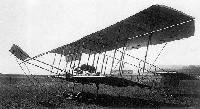 |
L.Opdyke - French Aeroplanes Before the Great War /Schiffer/
|
| View of the 1911 Sommer Grand Biplan (Aerobus).
|
 |
Журнал - Flight за 1910 г.
|
| One of the most successful flyers of the day is the new Roger Sommer machine seen above, which was purchased and shown by the Hon. C. S. Rolls as one of the exhibits in the Royal Aero Club's section.
|
 |
H.Nowarra, G.Duval - Russian Civil and Military Aircraft 1884-1969
|
| The stand of the Russo-Baltic factory (Riga) at the All-Russian Aeronautical Exhibition in St. Petersburg, 1912. A number of these exhibitions were held between 1910 and 1914.
|
 |
Журнал - Flight за 1910 г.
|
|
|
 |
В.Шавров - История конструкций самолетов в СССР до 1938 г.
|
| "Соммер" РБВЗ
|
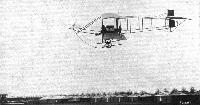 |
Журнал - Flight за 1910 г.
|
| Legagneux in full flight on his Sommer biplane at the Lyons Aviation Meeting.
|
 |
L.Opdyke - French Aeroplanes Before the Great War /Schiffer/
|
| The 1910 Sommer in one of its several versions.
|
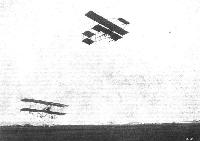 |
Журнал - Flight за 1910 г.
|
| The exciting incident at the Lyons Aviation Meeting when Paulhan, on his Henry Farman machine, overtook Legagneux on his Sommer biplane.
|
 |
Журнал - Flight за 1910 г.
|
| IN LINE FOR THE FIRST AERIAL "RACE." - MM. Martinet (H. Farman), Mumm (Antoinette), Legagneux (Sommer), and Capt. Dickson (H, Farman), ready for the start from the Anjou Aerodrome for the cross-country race to Saumur on June 6th.
|
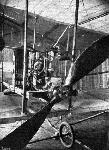 |
Журнал - Flight за 1910 г.
|
| Mr. Roger Sommer's own biplane with which he made a successful flight at the Rheims Flying Grounds on June 13th. This remarkable machine, as will be noticed, is fitted with one of the Humber Co's 4-cyl. 45-h.p. motors.
|
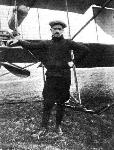 |
Журнал - Flight за 1910 г.
|
| Tetard, one of the flyers who did well at the Blackpool Aviation Meeting last week.
|
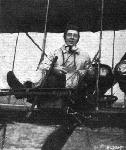 |
Журнал - Flight за 1910 г.
|
| Lindpaintner, the winner of the German Minister of War's prize at the Berlin Aviation Week this month.
|
 |
Журнал - Flight за 1911 г.
|
| Mr. H. J. D. Astley on his Sommer biplane at Brooklands. - Mr. Astley, on this machine on Saturday, gave a remarkable display of his airmanship when he had to steer between a telegraph pole and Mr. Conway's smashed triplane, with only about 2 ft. clearance to spare.
|
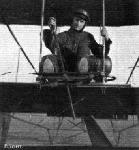 |
Журнал - Flight за 1911 г.
|
| M. H. Pequet, who has recently returned from his very successful flying exhibitions at Allahabad, where he conveyed the first aerial post ever officially recognised. M. Pequet is flying for Messrs. Humber, Ltd., at Brooklands on a Humber biplane, Sommer type, the machine on which he is seen being the biplane exhibited at the last Olympia Aero Show. Early last Saturday he made two flights of a quarter of an hour's duration, and on Sunday morning he was flying for 1 hr. and 10 mins., during which he first covered several circuits of the Brooklands course, and then made a cross-country flight over Walton and Wey bridge.
|
 |
L.Opdyke - French Aeroplanes Before the Great War /Schiffer/
|
| View of the 1911 Sommer Grand Biplan (Aerobus). It doesn't look as if any of the crew or passengers wore seat-belts.
|
 |
J.Davilla - Italian Aviation in the First World War. Vol.3: Aircraft M-W /Centennial Perspective/ (75)
|
| Sommer biplane side view drawing.
|
 |
Журнал - Flight за 1910 г.
|
|
|
 |
Журнал - Flight за 1911 г.
|
| Sketch illustrating how the attitude of the tail is adjusted by a hand wheel on the Sommer-type Humber biplane.
|
 |
Журнал - Flight за 1910 г.
|
| WING SECTIONS. - The above diagrams afford an interesting comparison of the wing sections of aeroplanes exhibited at Olympia. They are all drawn to a common scale, but have been set at an arbitrary angle of incidence, which does not necessarily represent that of the aeroplane In actual flight.
|
























